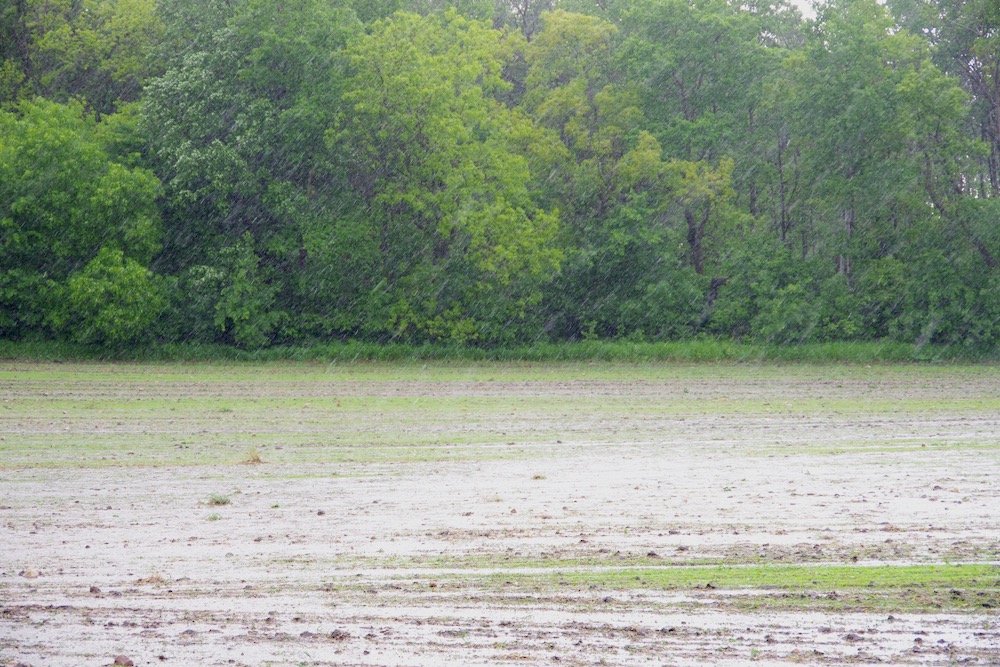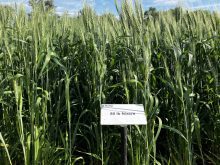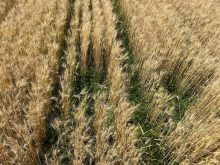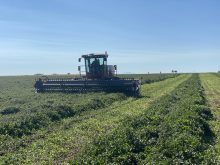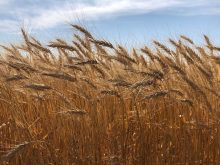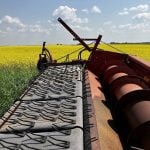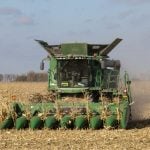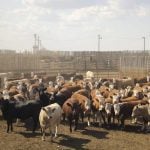Farmers in Western Canada can breathe easy. Rains across most of the Prairies this spring have gone a long way toward recharging groundwater levels and lowering the risk of drought across the region.
“We had an extremely warm winter with lower-than-normal precipitation in most areas,” says Trevor Hadwen, agroclimate specialist for Agriculture and Agri-Food Canada. “We were a little worried going into the spring, for sure. But this has calmed us down.”
While the wet spring created difficulties in seeding in a few fields, most producers across the Prairies have their fields seeded with sufficient topsoil moisture to get the crop off to a decent start.
Read Also
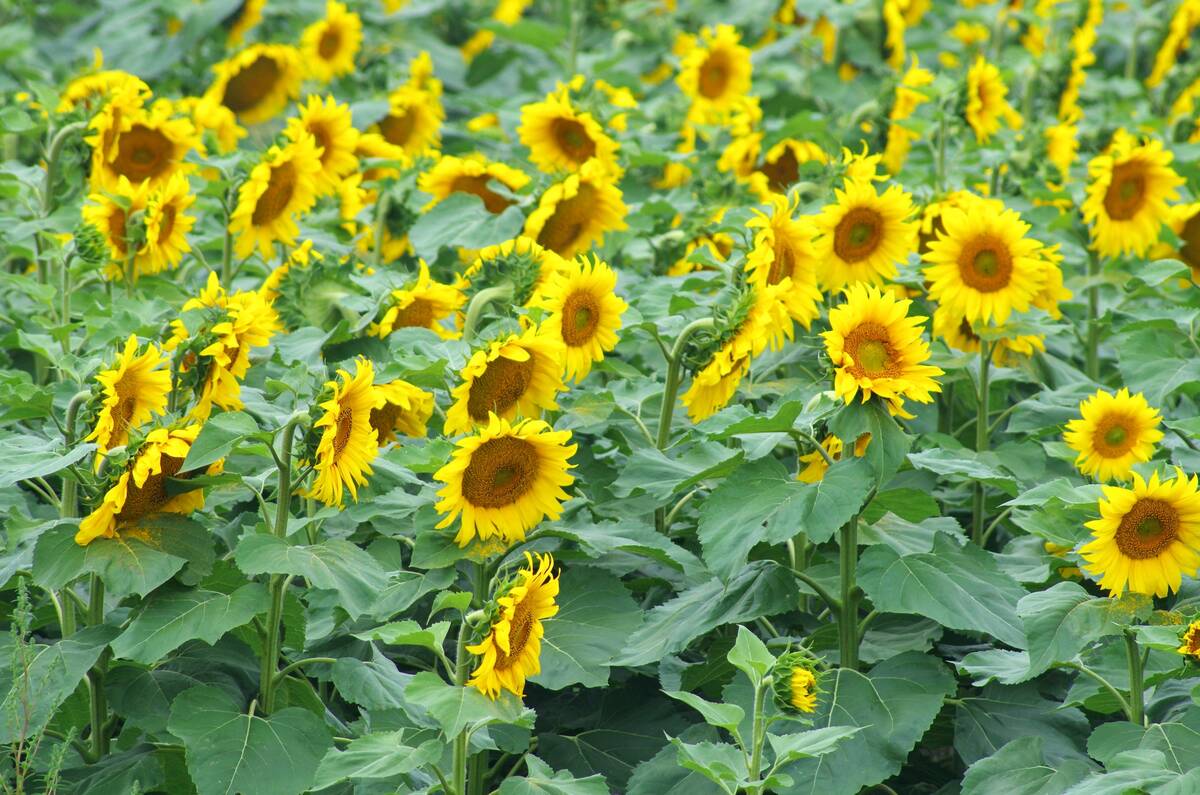
Made-in-Manitoba sunflower hybrid headed to market
Manitoba’s confection sunflower growers will have a new seed option next spring developed specifically for performance in the province. The…
After years of having to adapt to drought, though, what does this shift to wetter growing conditions look like for dryland Prairie farmers?
Soil management strategies
Ken Panchuk, a provincial soils specialist for Saskatchewan’s ministry of agriculture, says for the most part, big-picture soil management strategies won’t change much for dryland farmers in his province. Strategies such as no-till and regenerative farming are widespread and excellent at managing water in dry or wet conditions.
But in a province like Manitoba, where there is a little less uniformity in soil management strategies, the situation can differ from one farm to another.
“It may depend a little bit on what the soil management strategy has been on those fields,” says Marla Riekman, a soil management specialist for Manitoba Agriculture. “If soils have good structure and haven’t been over-tilled, they may be soaking up and using some of this water a little better, because they may have an easier time infiltrating that water deeper into the soil profile.”
But producers who have structural issues, where water doesn’t move down into the soil profile as easily, may find themselves struggling with problems such as soil compaction this year.
“Now that we have a bit of moisture, the soil particles can slide over each other a little bit easier. This is where soils can be at a higher risk of things like compaction associated with field activity,” she says. “We tend to see more ponding in those compacted areas of the field.”
Obviously, avoiding field activity is impossible, but Riekman says farmers finding themselves in that position should start thinking about basic concepts for mitigating compaction.
“We want to make sure that we’re thinking about things like properly ballasted tractors, making sure our tractor tires are at their rated pressures, and making sure that we’re limiting some of the weight of the equipment where we can,” she says. And if these conditions carry into the fall, farmers should try to reduce the amount of random traffic crossing the fields with equipment such as grain carts.
Managing salinity
Riekman stresses that salinity issues don’t go away during wetter periods; they just hide.
During dry years, salinity tends to get worse because there is more evaporation than precipitation, which results in insufficient water moving down to wash the salts down into the root zone. Because of this, the water moves upward (through processes like capillary rise), bringing salts toward the surface, where they often show up visibly with that bathtub ring effect.
“Now that we’ve moved into some wetter periods, we start to see the salinity become diluted at the surface, or hidden,” Riekman says. “So we may have a temporary reprieve.”
But even in a wet cycle like this, if the rains continue and the water table rises close to the surface, the salts will rise with the water table and begin to show up again.
“Salinity is always cycling; it comes along with wet and dry periods,” Riekman says.
Paradoxically, Riekman says years like this, when the problem seemingly goes away, are often the best time to start managing salinity.
“If you have areas where you want to establish a salt-tolerant forage during those dry years, it can be very difficult; the soil is just too dry at the surface. When you have a bit of moisture, you may have better luck,” she says.
Weed control strategies
Weed control is another undertaking that changes under wetter conditions.
“Right now, producers are focused on watching the flushes of weeds coming,” Panchuk says. “When you have frequent showers, that’s a recipe for getting the next flush of weeds established.”
The big question producers and extension specialists like Panchuk will have to address is which weeds are developing and at what density, so they can determine the correct control products to use.
“Because weeds are competing for moisture and nutrients, you don’t want to let the weeds get too far advanced,” Panchuk says. “If this generous raining pattern that we have becomes a drier bias, then producers will need every drop of moisture that was conserved earlier in the growing season to bring the crop to maturity.”
The timing is also critical.
“We’ve got the longest days of the growing season upon us right now, so take every opportunity to get as much growth occurring as possible to get canopy cover,” Panchuk advises. “Once the canopy covers the field, then the crop would have a competitive edge over any new germinating weeds.”

Think about insurance
As we head into a wetter summer with high temperatures expected, farmers may also want to make sure hail insurance is updated. While this moisture is definitely a good-news story for farmers, there’s a literal black cloud attached to it: an increased risk of severe storms.
“One of the key components of getting storm events is moisture,” Hadwen says. “If we have moisture available on the surface and we get some heat, that will breed thunderstorm activity.”
The number of hail events has been relatively low during the dry years, but that appears set to change this year, he says.
“We will likely get larger and more storm events than we have had in recent years.”
Not out of the woods yet
While the moisture the Prairies have received this spring has recharged the water table, Hadwen said it’s a bit too early to declare the drought over — although that day appears close in Manitoba.
“We’re not quite out of the woods in some parts of the Prairie region,” Hadwen warns. “The rain is going to solve the immediate moisture needs, but it still takes a long time for the pastures to fully recover, and it also takes a long time for water supplies and groundwater to fully recover.”
Manitoba is a little bit different from the rest of the Prairies at this point, he adds.
“Manitoba has received the most moisture. The province received about 200 millimetres of precipitation in the central region, all the way from Winnipeg over to Brandon.”
This is typical for Manitoba, he says, because the province tends to have a wetter climate, but in recent years, southern Manitoba has been in a significant drought in terms of moisture deficit levels.
There is little concern for Manitoba in terms of moisture deficits, Hadwen says; in fact, the province has pretty much recovered. The only area of concern is the province’s northwest, which has received a little less precipitation than the rest of Manitoba.
“Last year, we had some very dry conditions compared to what we would normally get,” Hadwen says, adding that timely rains, as well as conditions cooler than the rest of the Prairies, helped.
“But this year, that 200 millimetres for that central southern portion of the province is excellent for soil moisture, though probably a little too much for some areas,” he says. “That is starting to percolate and really recharge those subsoils.”
In Saskatchewan, Hadwen says, precipitation ranged from just over 100 mm around the Regina area to a maximum of about 150 mm in the area west of Saskatoon.
But nevertheless, the drought prognosis is almost as good for Saskatchewan as it is for Manitoba, with only a small pocket in the agricultural area in the northwest with any significant drought risk.
“In that western region of the province — Kindersley, Leader, and even all the way up to the North Battleford area — it has been a little bit drier,” Hadwen says. “They’re recovering, but just not at the rate that we need. They were certainly in a much larger deficit going into the year. So we still have some concerns. But again, we’re seeing tremendous improvement.”
Most of Alberta received rainfall in the 100- to 125-mm range, and as a result, the province is a little bit worse off in terms of drought. One area that seems to be missing most of the rainfall so far is Alberta’s Peace region, but Hadwen says that region doesn’t normally get the bulk of its rain until late June or early July.
“That central region of the province has a little bit of what we call that D2, or severe drought category, and a little bit of D1, which is moderate,” Hadwen says. “But the reality is that those areas were the D3s or D4s last month, so we’ve seen improvement throughout the Prairie region.”
Unlike Manitoba, the subsoil is not fully recharged in Alberta and Saskatchewan.
“We have the moisture in that top root zone that will really get us through that spring period, but we really need moisture to percolate down and recharge levels further down,” Hadwen says. “We’re going to need continued rain this season. We don’t have those deeper moisture levels to really rely on.”
Precipitation models aren’t telling forecasters much for the coming months, he says, but there is some reason for optimism from the meteorologist maxim, “Rain begets rain and drought begets drought.”
“It’s a cyclical thing,” Hadwen says. “You need that moisture that we’ve received to break the drought. Now that we’ve got the moisture in the system, we will continue to get some big rainfall events until that moisture dries out.”
Hadwen also points to a significant moisture deficit in the three- to five-year period.
“We have fixed the moisture deficit for most regions in the one-year timeframe. But over the three-year timeframe, we’re still seeing pretty big deficits,” he says. “So we’re still not fully out of the drought.”


